You may not find this terribly rewarding unless you're included here, so this is a good time for casual and random browsers to turn back before they get too caught up in the sweep and majesty of the proceedings and can't let go.
A family visit to Sault Ste Marie and environs (3)
The Ermatinger Old Stone House, ice cream at BeaverTails, and
dinner at the Fluid,
7-8 August 2025
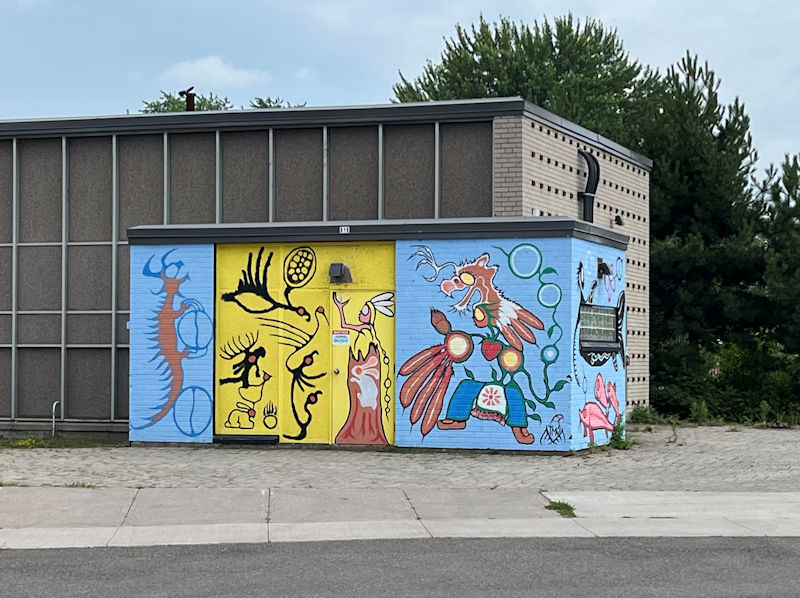
More attractive but enigmatic cultural lore
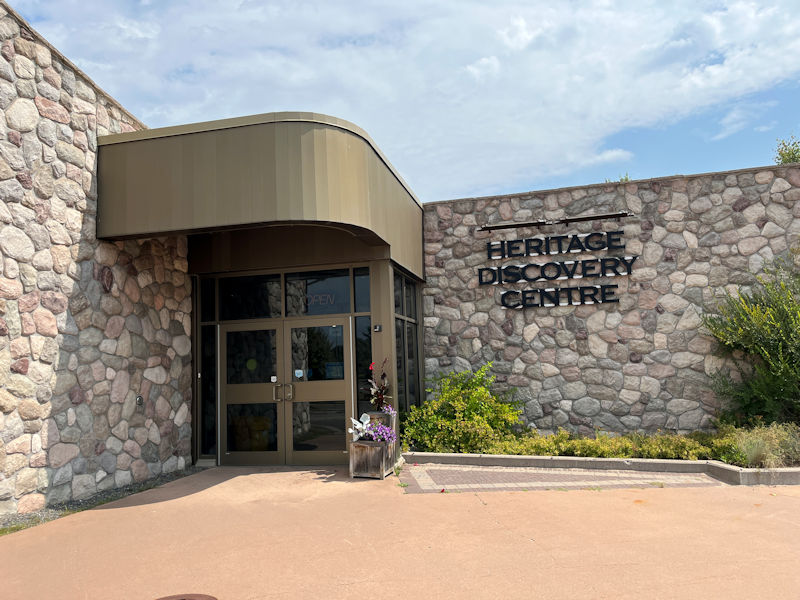
This is the Heritage Discovery Centre, inaugurated in 2014 to surround, interpret, and house the Ermatinger Old Stone House here on its original site, and the Clergue Blockhouse, which was moved here from its own original site in 1996.
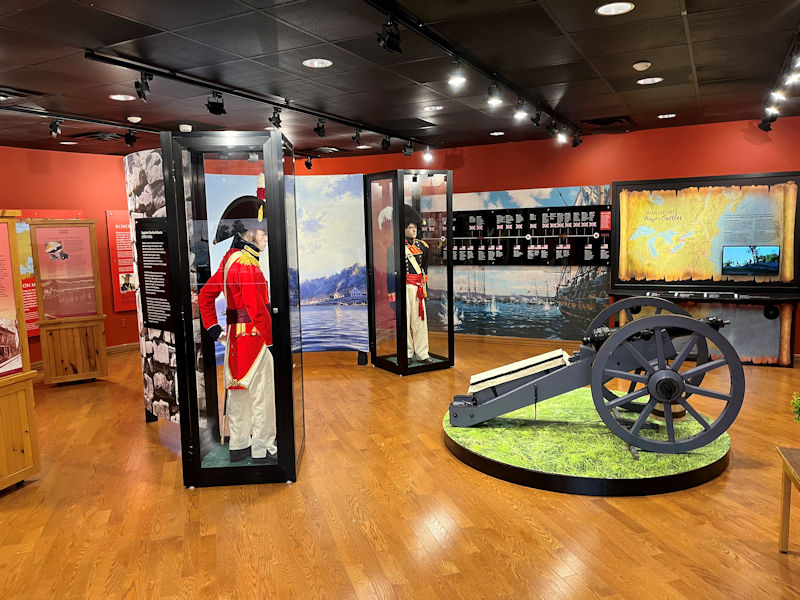
Here, in the new parts, are various explanatory installations focused on the period of the War of 1812 between the USA and Great Britain, when the Old Stone House was being built.
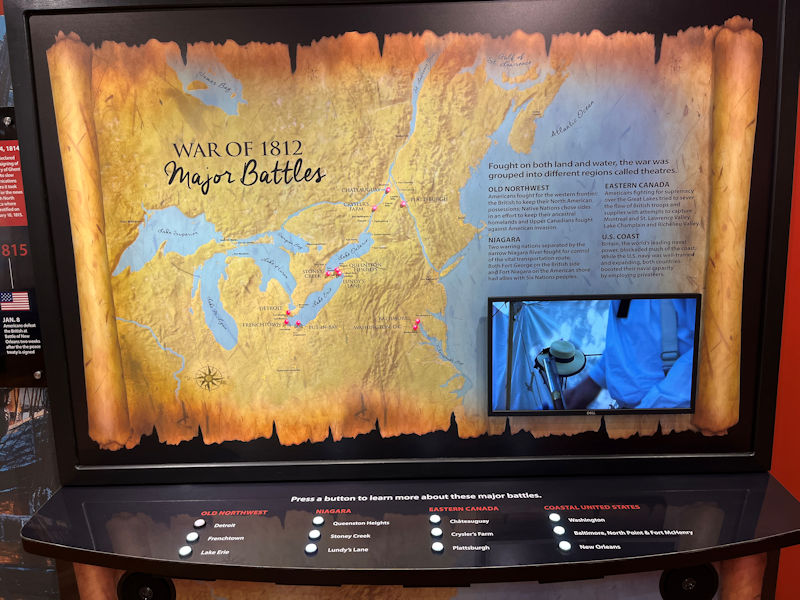
Some of these are very informative and technologically very well done.
The Ojibwe, Odawa, and Pottawatomie groups of the Algonquin peoples migrated from the east around AD 1200 and found the rapids here a good place to establish a regional base. French trappers and Jesuit missionaries arrived in the early to mid-1600s and developed fur and mineral (and religious) enterprises here, renaming the settlement Sault Ste Marie (the St Mary Rapids) in 1668; the official French had to withdraw following the Seven Years War in 1763, leaving a 'cosmopolitan, mixed population of Europeans, First Nation peoples, and [mixed race] Métis' on both sides of the river. The North West Company established its fur trading centre here in ca. 1790 and only left after its merger with its rival, the Hudson Bay Company, in 1823.
The city on this side of the St Mary River now has a population of about 72,000; its cousin on the Michigan side, also established in 1668, has only about 13,500 residents.

The new interpretation centre, facing into the compound of sorts towards . . .
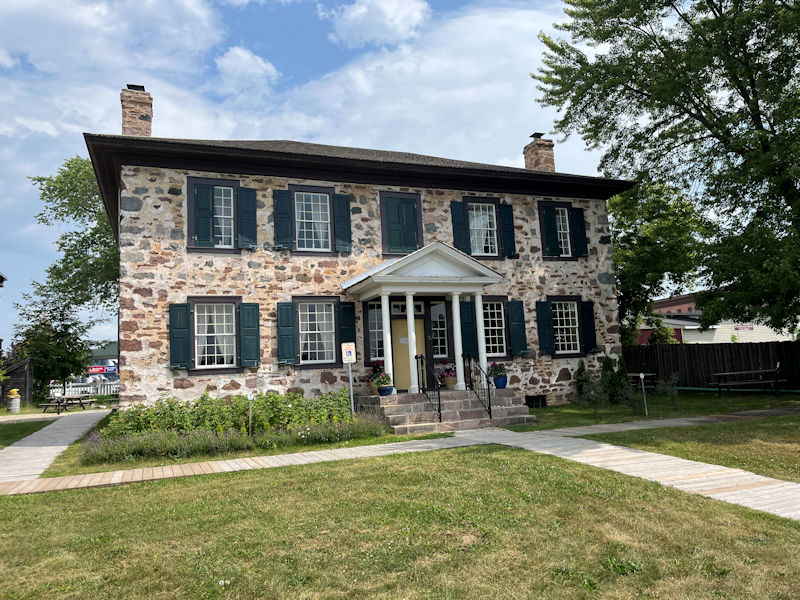
. . . the Ermatinger Old Stone House. It was built in 1812-1814 by Charles Oakes Ermatinger, an independent fur trader, and is the 'oldest stone house northwest of Toronto', built on a Georgian model with a masonry style common in Quebec. It's considered to be representative of Sault Ste Marie's role in the fur trade of the late 18th and early 19th centuries.
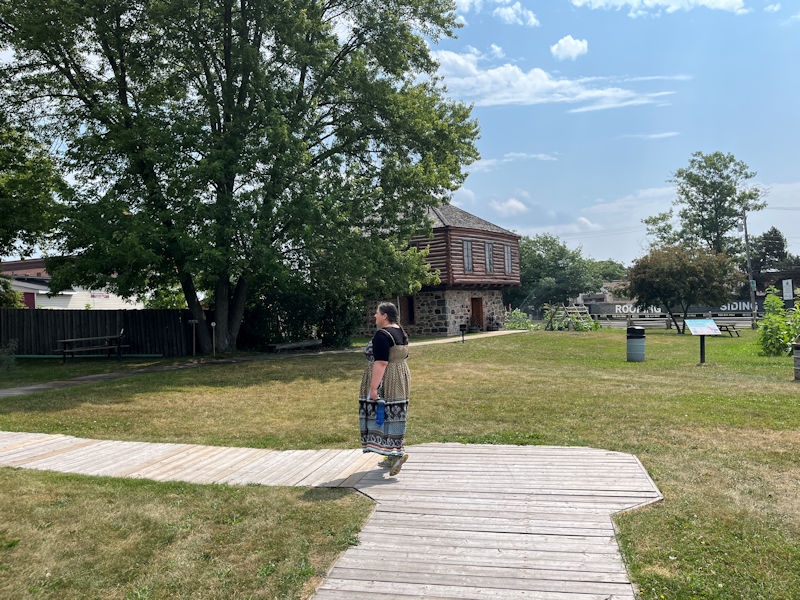
Alongside it is the so-called 'Clergue Blockhouse', originally a one-story gunpowder magazine built nearby in 1819 as part of a fort owned by the North West Company as a fur traders' depot; that company merged with its territorial rival the Hudson Bay Company in 1823, and the fort and that building were abandoned.
It was purchased in 1894 by Francis Clergue, an extremely big name in Sault Ste Marie industrial history, who restored the stone magazine and built his cantilevered log living quarters and office on top of it. More on that later, but one immediate takeaway is that this isn't really a blockhouse; Mr Clergue just wanted to make a replica of a frontier fort from the era of the Indian Wars.
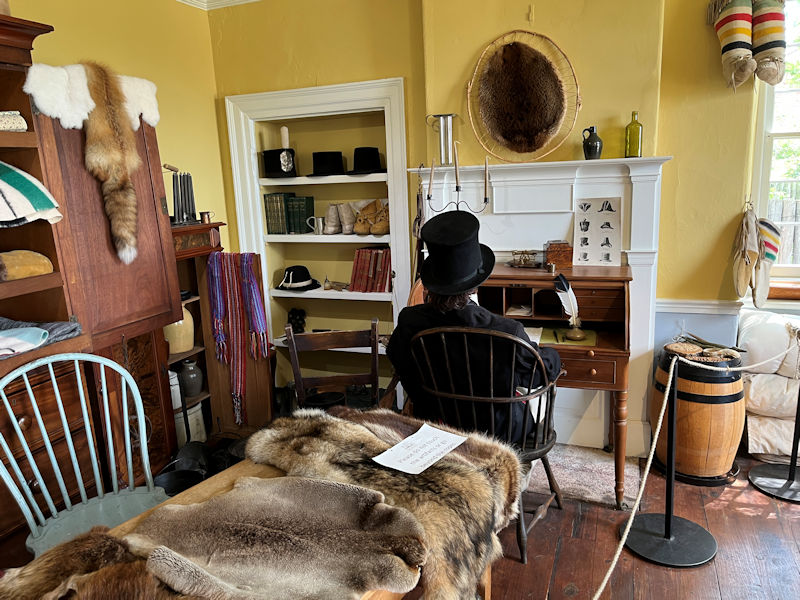
-- Oh sorry, didn't mean to disturb.
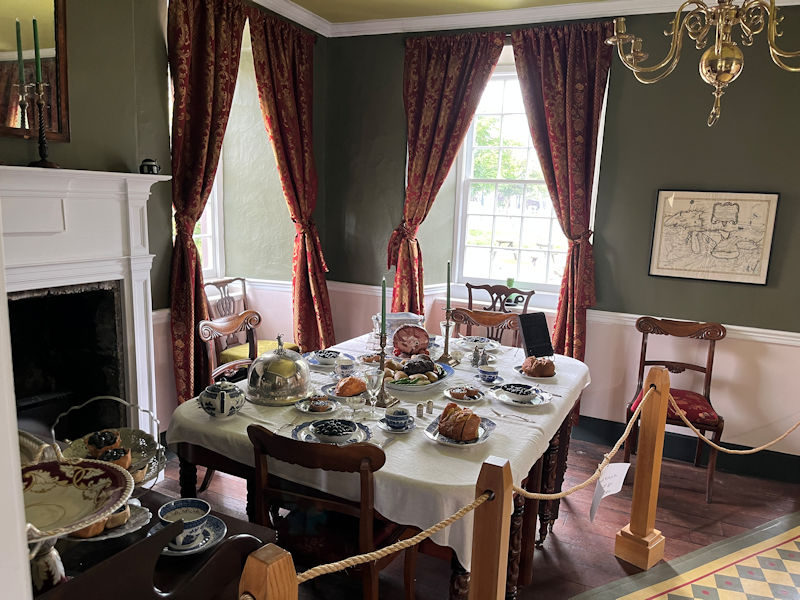
The Ermatinger House was purchased by the city in 1965 and restored to what seemed like its original condition, with appropriate furnishings and props. Ermatinger himself (1776-1833) began as a clerk in the North West Company, a sort of monopoly which aggregated in Sault Ste Marie all of the furs brought in by trappers from the northwest and shipped them out mostly to Europe; he rose to become a partner in the firm, but moved here in 1808 and set up as an independent trader. He'd married Mananowe (aka 'Charlotte'), daughter of an Ojibwe chief, and they raised 13 kids here.
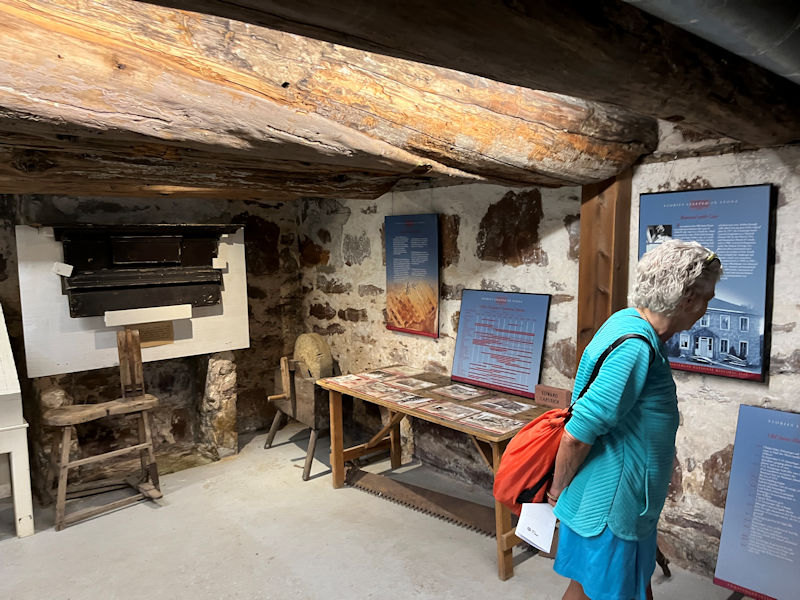
Here in the basement is where he temporarily stored the furs brought in by the voyageurs, before baling them up for seasonal shipping out through the Great Lakes, often to Europe.

Period fixtures well presented
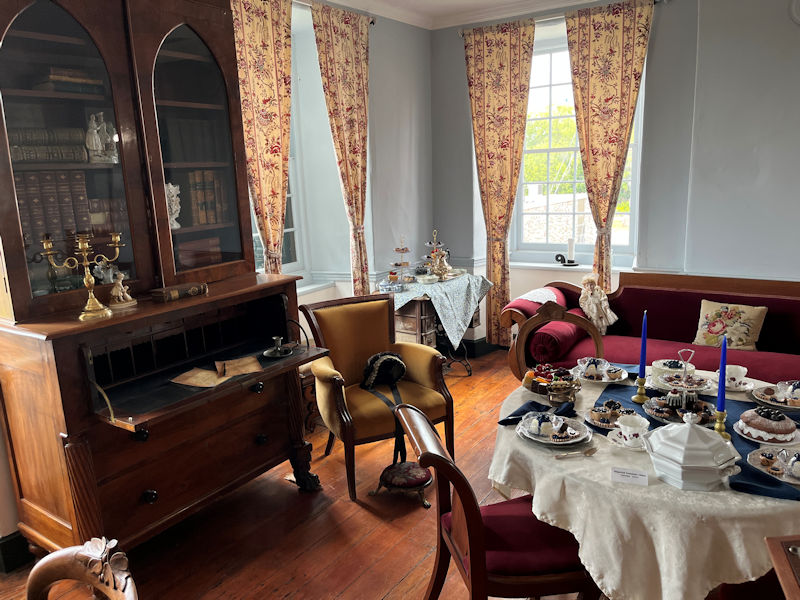
The US army attacked Sault Ste Marie in 1814 and destroyed most of the town (as one does), but for unknown reasons didn't harm this house. For some years it became a centre of social life for the communities on both sides of the river, until in 1828 Ermatinger retired and the family moved to a farm in Quebec.
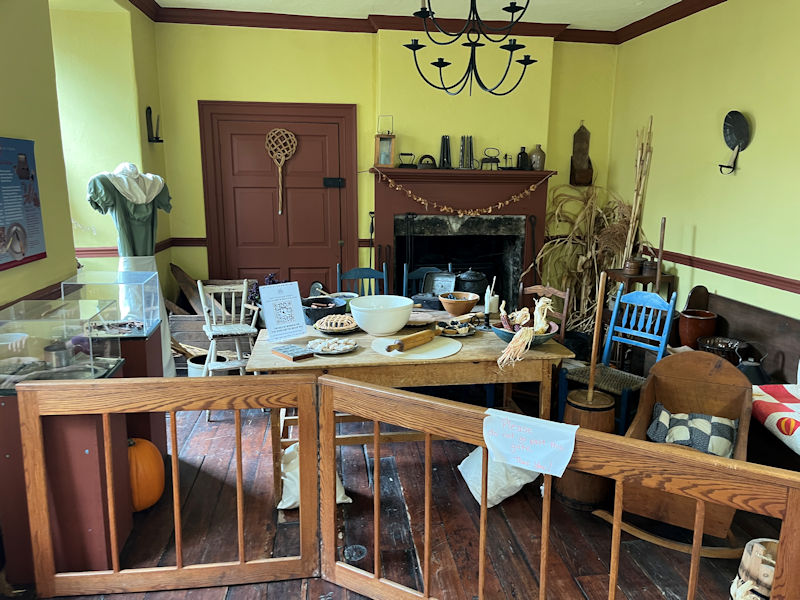
The house was converted to several uses subsequently, and was renovated into the 'Stone House Hotel' in 1852. It's also survived its use as a tavern, a courthouse, a post office, a dance hall, a YWCA, a tearoom, and (apparently) even an apartment building [from the brochure], until it was purchased by the city and restored.
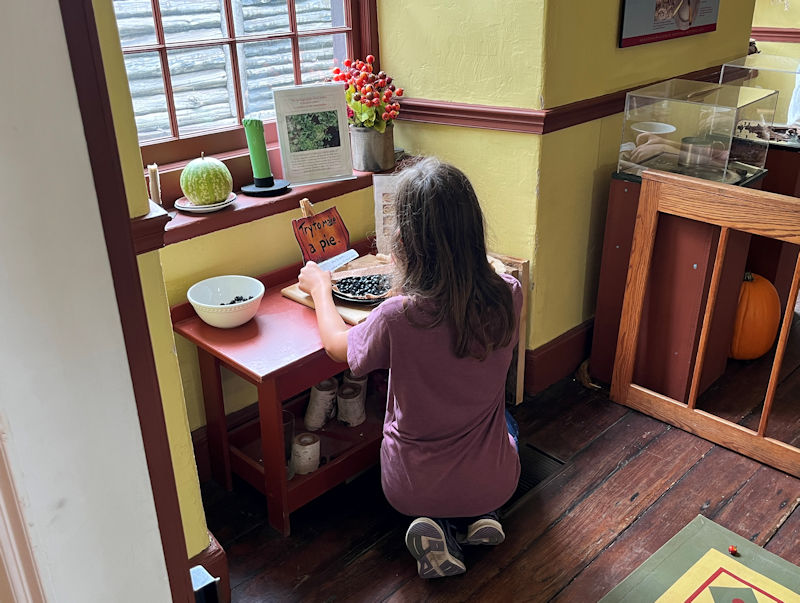
'Try to make a pie'.
-- Okay, will do.

We're in the seasonal log kitchen area at the back of the house, and this lady is a truly gifted explicator of how the kitchen's work was accomplished: how the chief cook supervised the staff and arranged everything from menus, purchases, use of the implements, and even . . .

. . . various related facets of the cook's responsibilities.

Some of this we've already semi-plagiarized above, but the plaque shows how well this display has been put together.
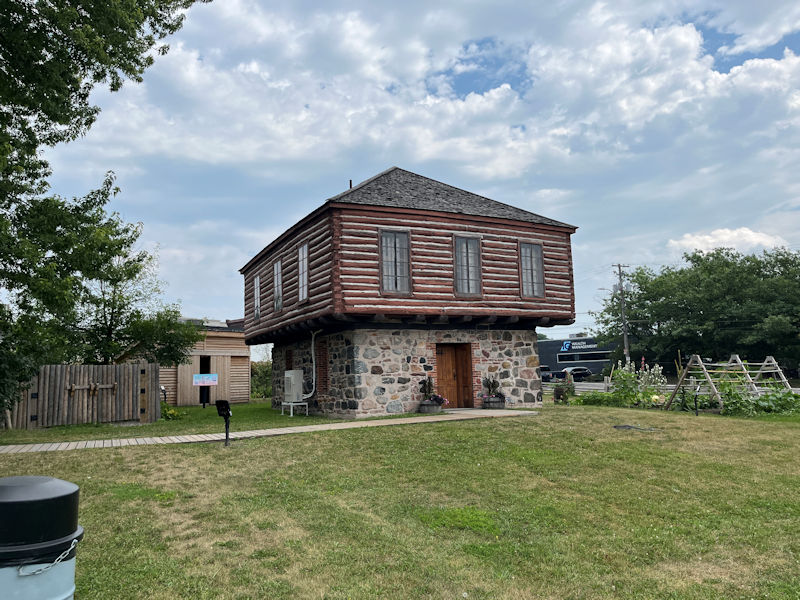
Now to the 'Blockhouse', snuggled in . . .

. . . just next to the Ermatinger house.
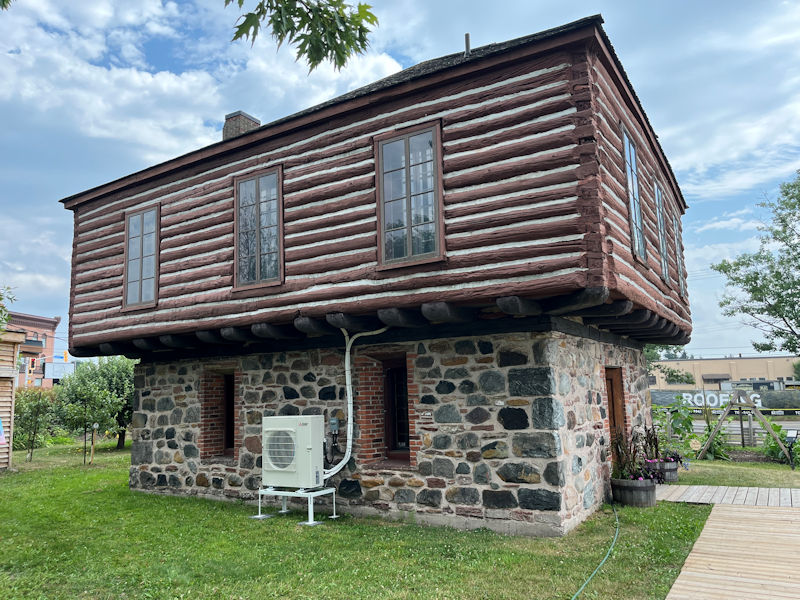
We've seen some restored blockhouses from this period in North America, like Fort Niagara, Fort Ticonderoga, maybe more, and none of them had bullet-worthy windows like that, or air-conditioning.
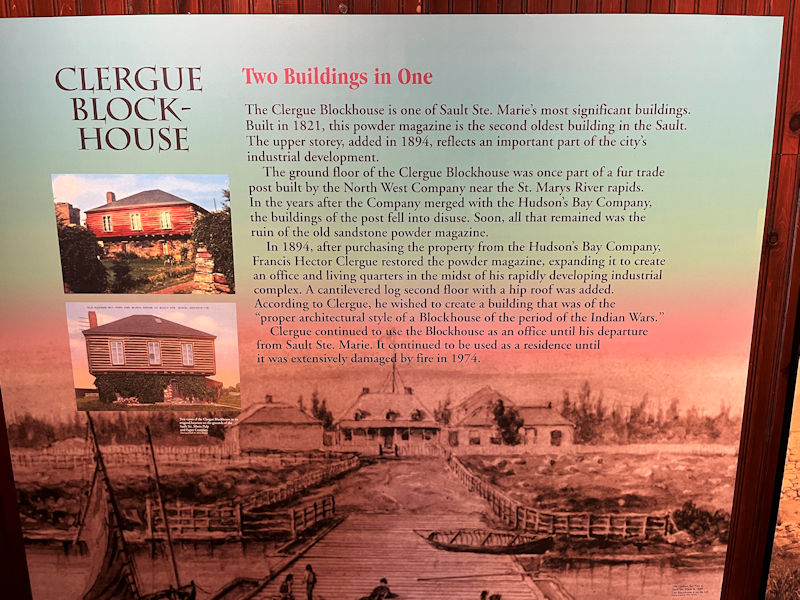
We've also semi-plagiarized some of this already (didn't mention the 1974 fire though), still, they make a better job of it than we could.
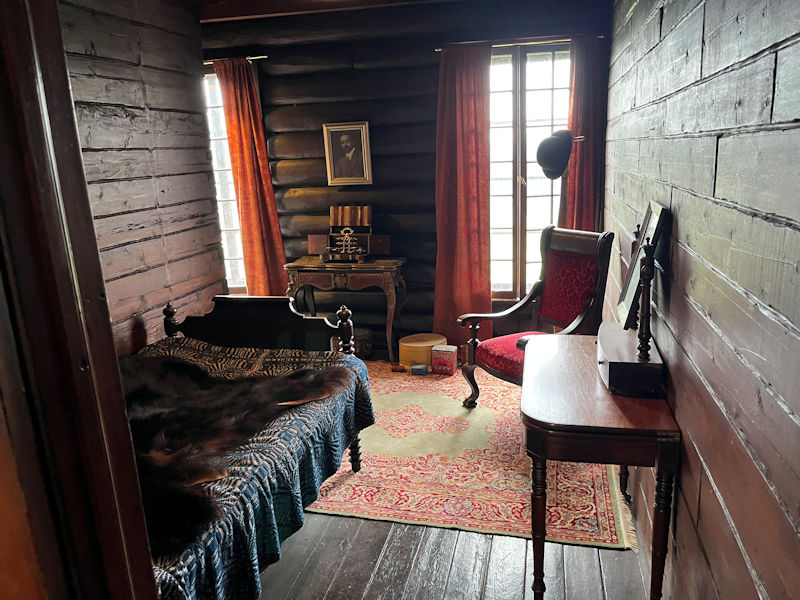
One does have to hope that Mr Clergue was comfy in his bedroom, though.

This part about the fur trade is actually very interesting -- one feels compelled to let the poster just speak for itself.
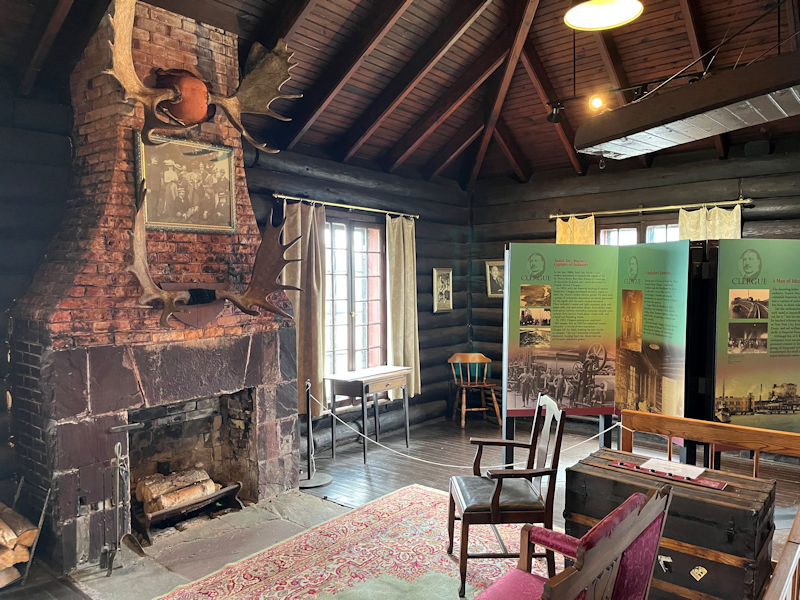
Still, one would have to guess that Mr Clergue did not have 13 kids like Mr and Mrs Ermatinger.
The name Ermatinger, BTW, seems to have strong Swiss roots, back a few generations maybe.
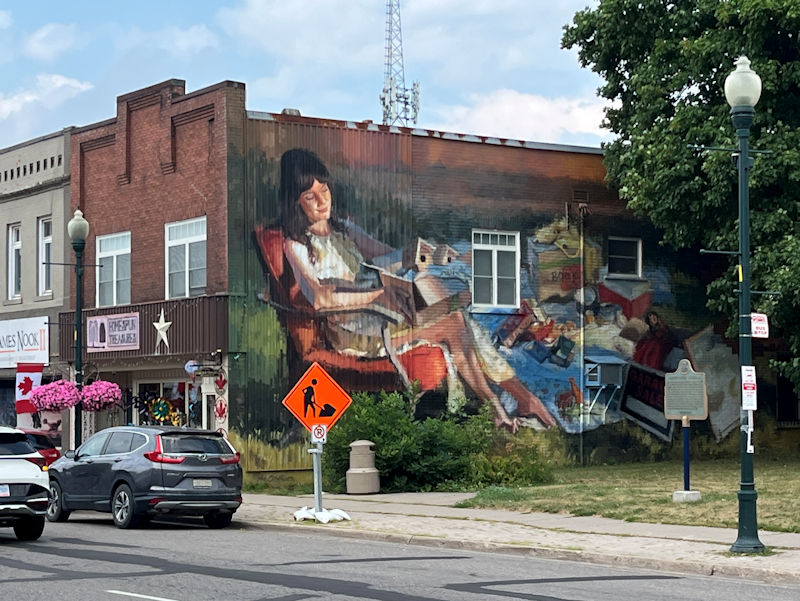
That was fun -- now we're on a potentially life-saving march for a good lunch.
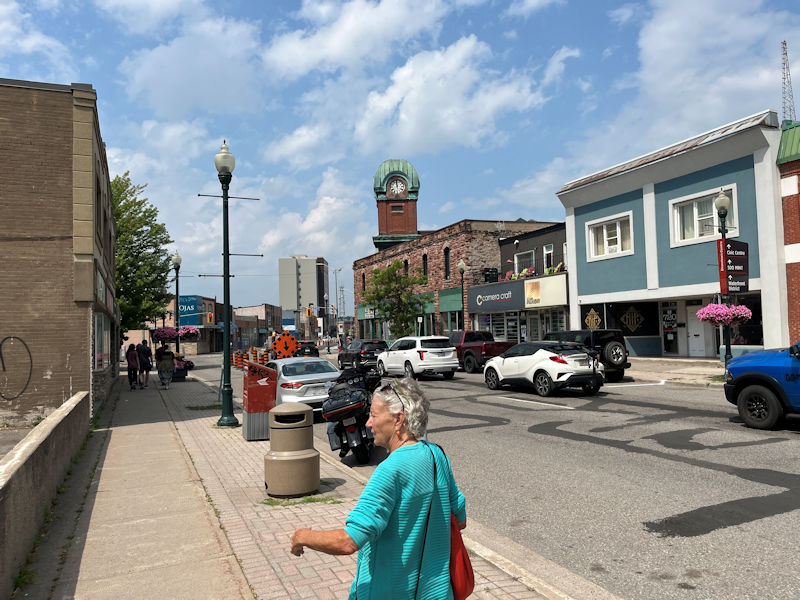
Queen Street seems to be the most likely place to find a congenial luncheon location.
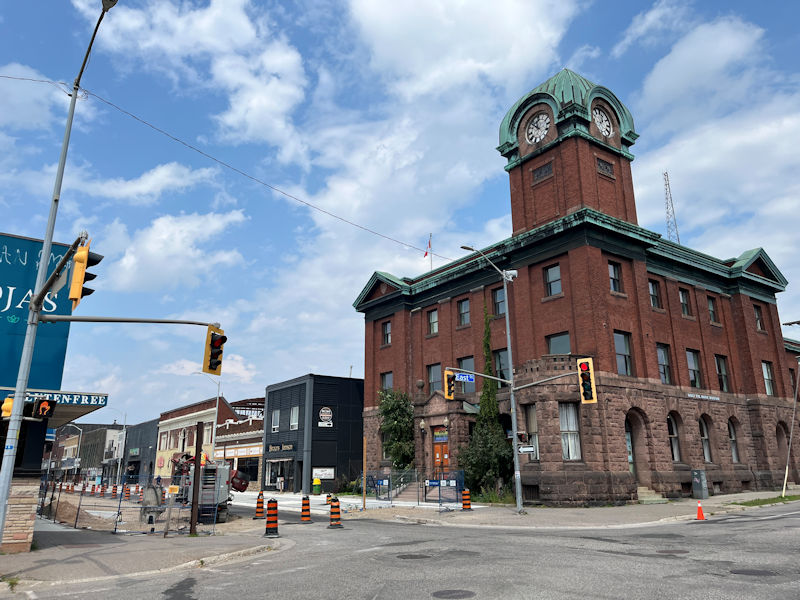
That's the Sault Ste Marie Museum, in the old post office built in 1906. Would that we had time to give that a try on this trip. But we don't -- it's that or lunch: no contest.

Street works in progress: 'Dig we must'.
Smokey's is advertised as a 'night club' and looks like it's intended to be a fairly lively one. It's got a 'B.B.Q. Pit & Patio' with a logo of a fat pig's face with sunglasses on.
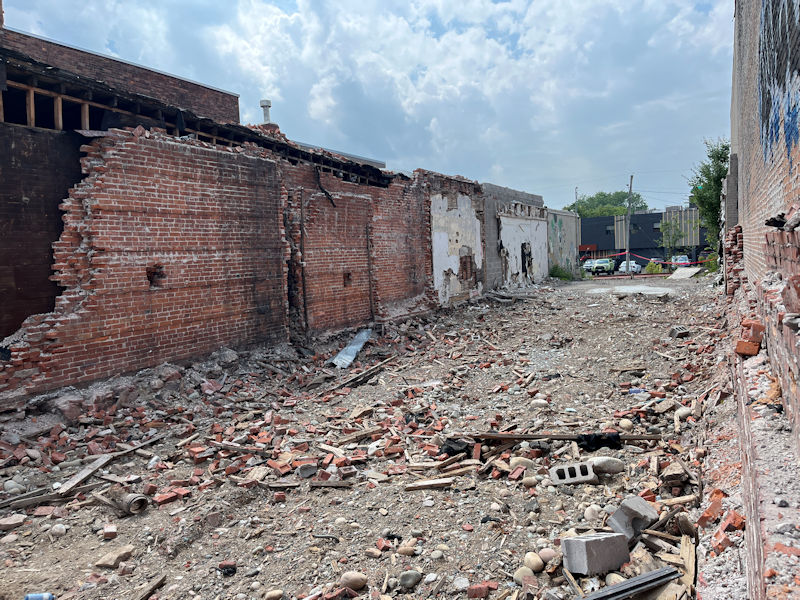
Another work in progress on Queen Street (with reminders of Gaza)
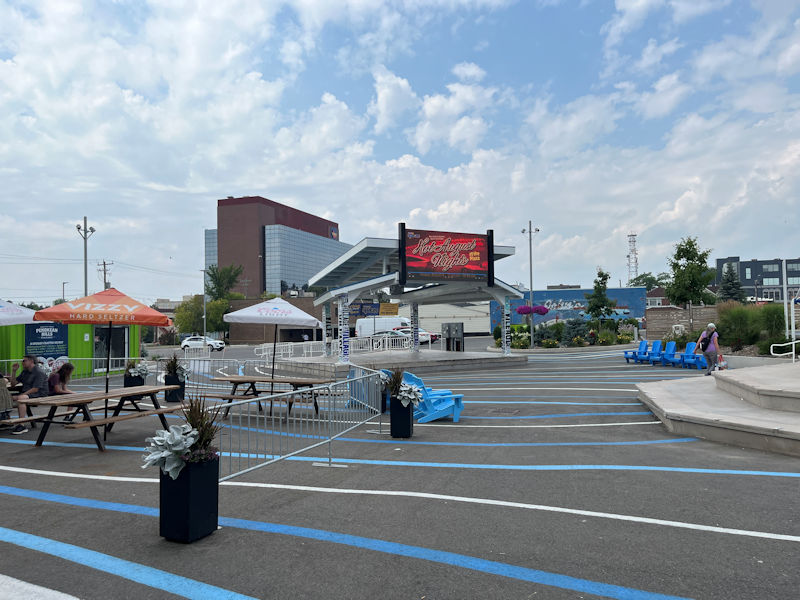
Happily, we've found the 'Downtown Plaza', between Queen and Bay Streets, originally controversial when voted in by the city council in 2020, intended as common area with a skating surface (important in Canada), event space, restrooms etc., the Mill Market, and a Tim Hortons already alongside.
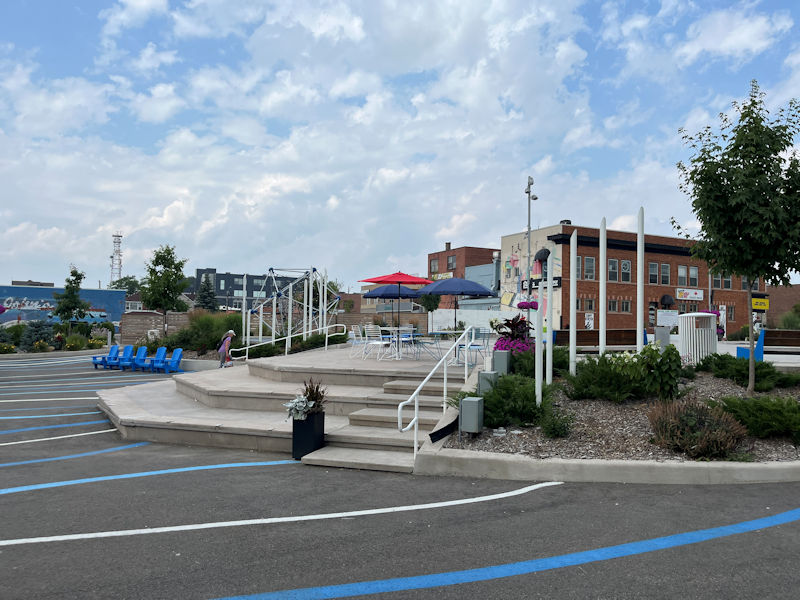
The 'event space', great stuff for opening up a crowded downtown for happier urban lives,
and most of all . . .
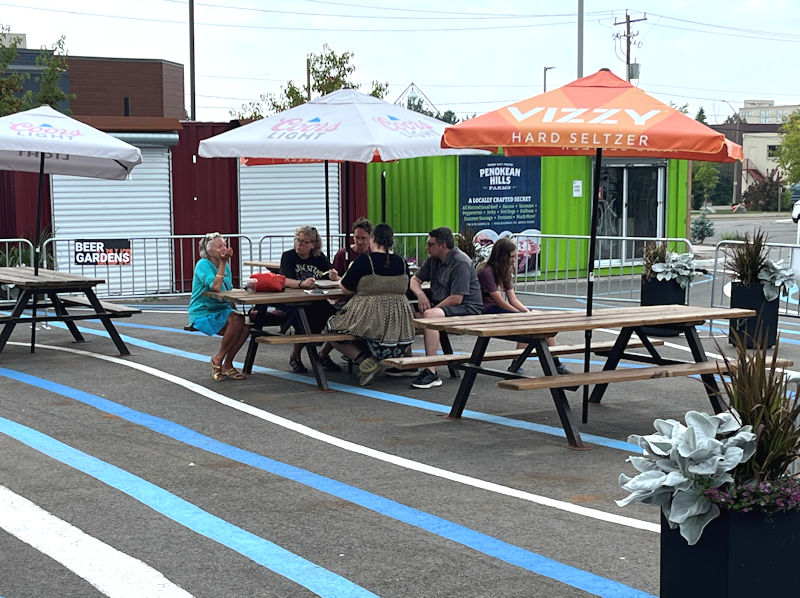
. . . it's got, in a small cooking trailer, the fabulous Syrian Table Shawarma and Falafel (superb), with just alongside it the independent trailer of a kombucha etc. enterprise (good news for some of our party).

We're crossing the Cergue Park, with the river off to the right, and just ahead . . .
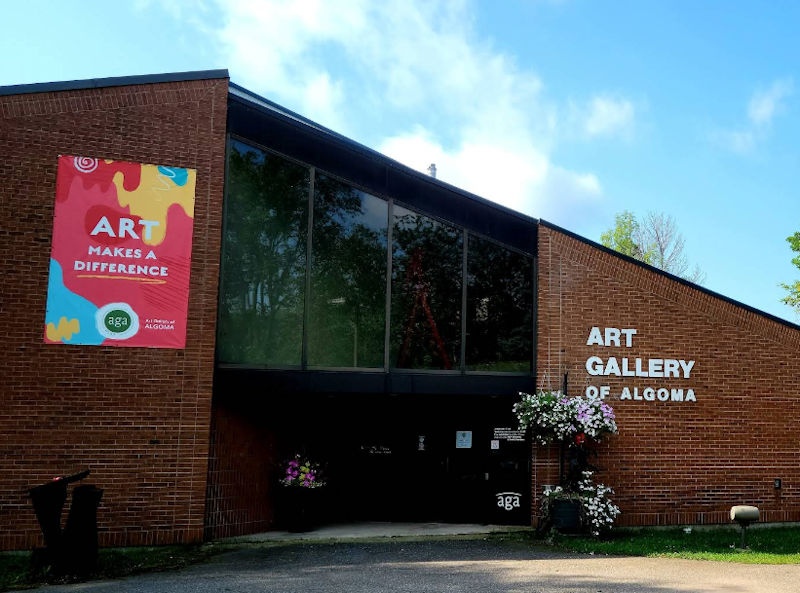
. . . the Art Gallery of Algoma [pilfered photo from Google Maps], ('the hub of visual arts in the heart of Northern Ontario') with specialties of modern regional landscape art, and especially of the 'Group of Seven', founded in 1920, 'who changed the way Canadian landscapes were painted'. Many of the people in our group liked a lot of these works very much . . . but unfortunately our photographer didn't.
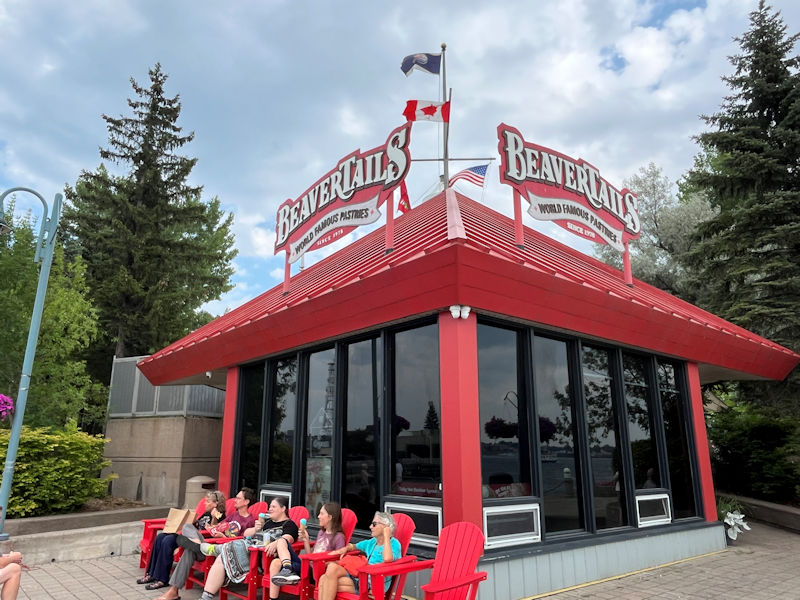
So following which we retired to the BeaverTails part of the Roberta Bondar Park for late afternoon refreshments.

After a long day of prancing all about round the downtown area . . .
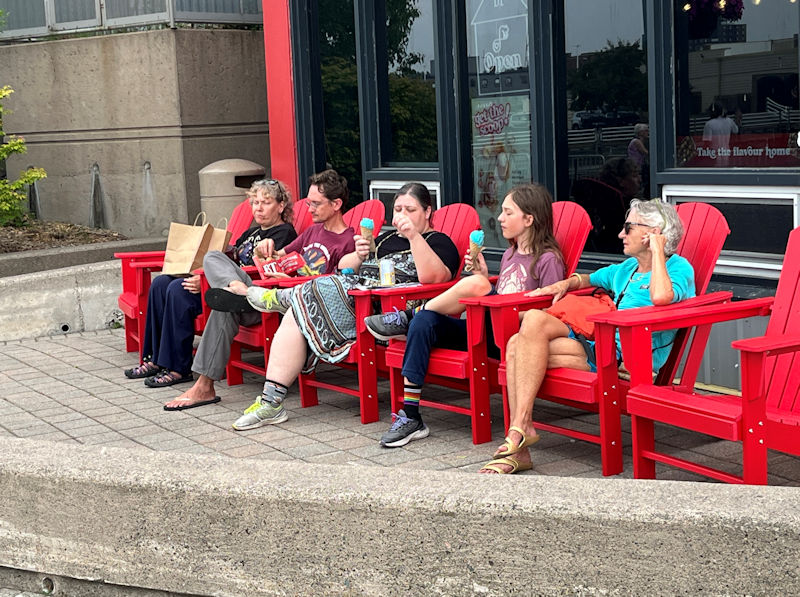
. . . some peaceful relaxation seemed in order.
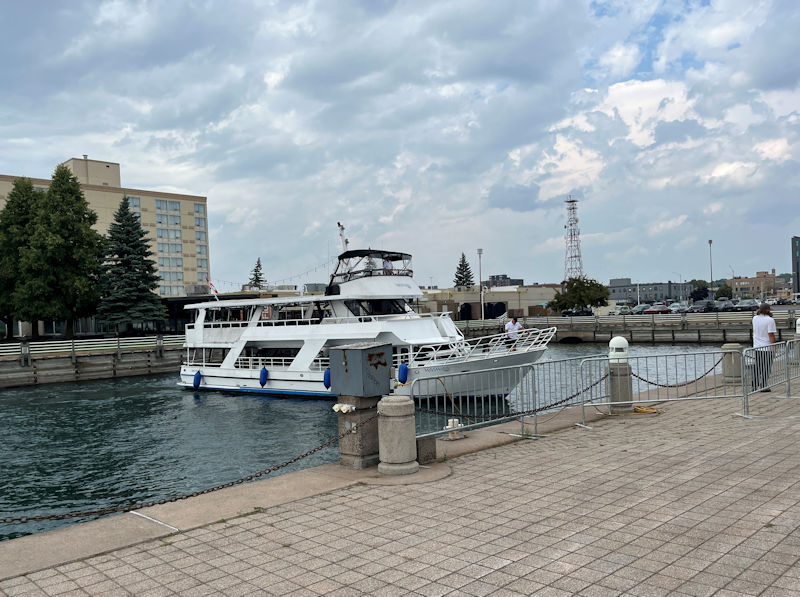
A tour boat carefully executing a difficult maneuver

Back for dinner at the Fluid ('boardwalk patio and grill'), part of the Delta Hotel, Waterfront.
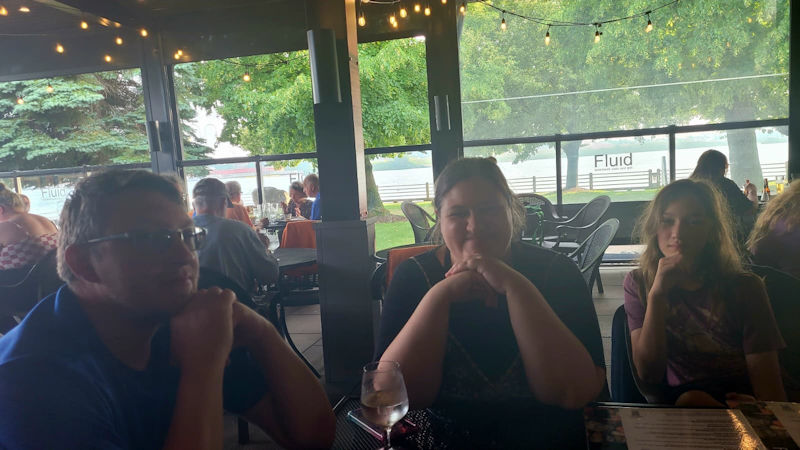
The Fluid, though oddly named, is crowded tonight.
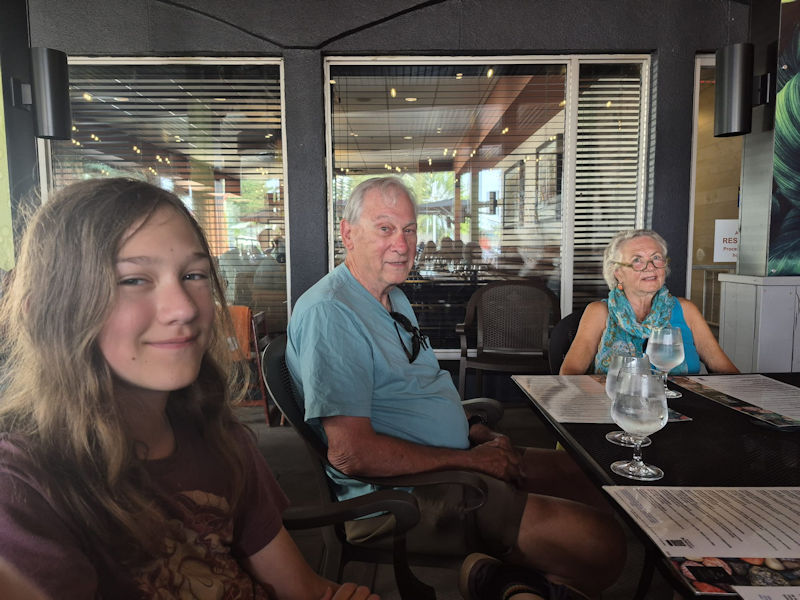
But we can wait, or some of us can wait after the beer comes. Like . . .
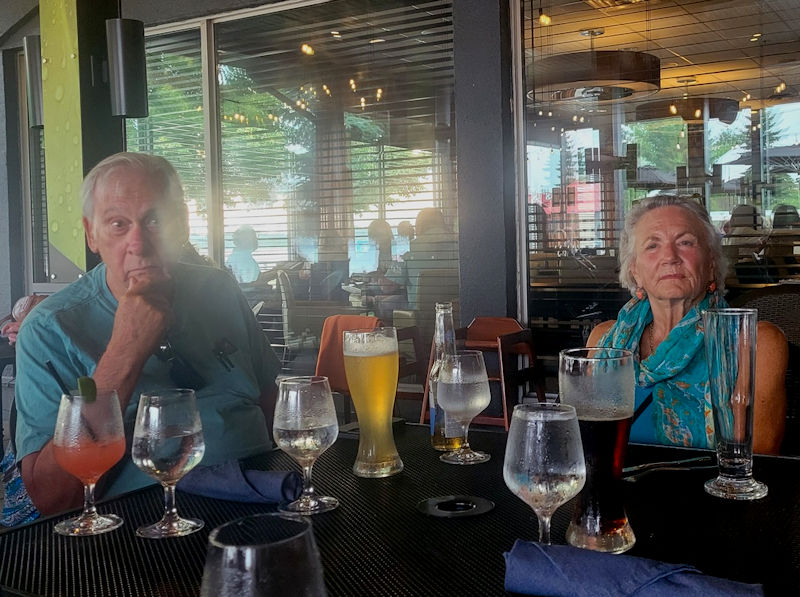
. . . now.
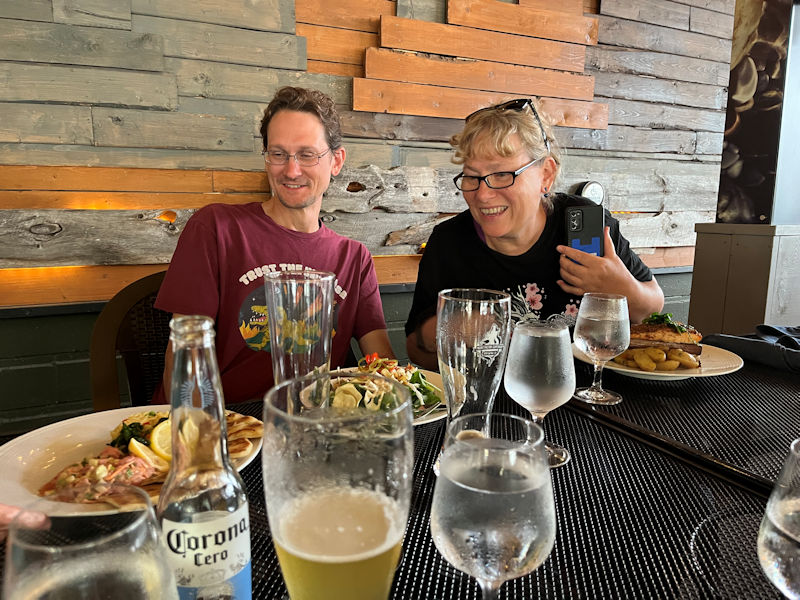
And in good time, dinner arrives. Mounds and mounds of it.
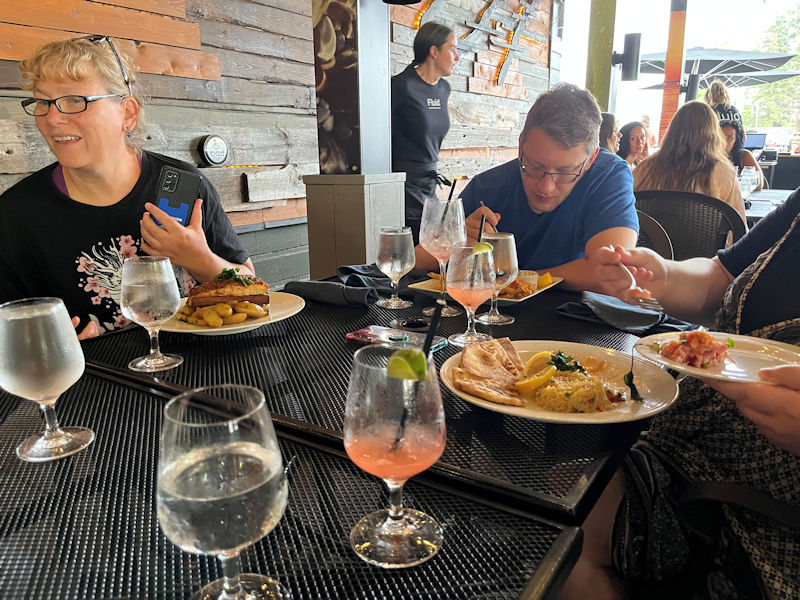
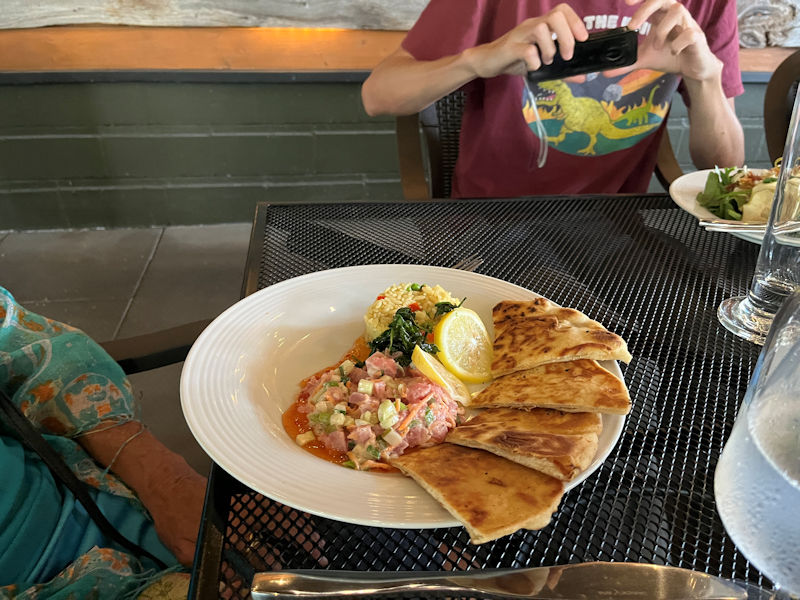
There is probably a name for that. We'll need to consult one of our team for it.
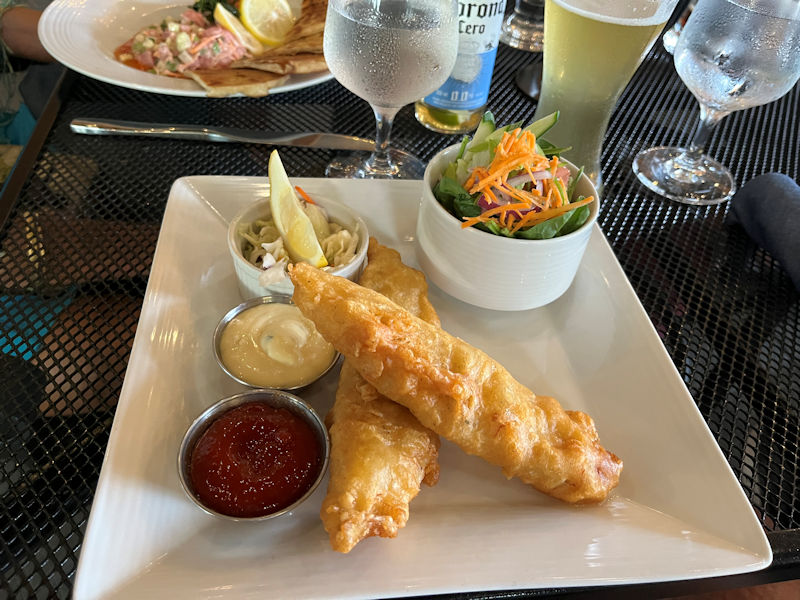
But we can certainly recognize a classic 'fish and chips' (but please hold the chips).
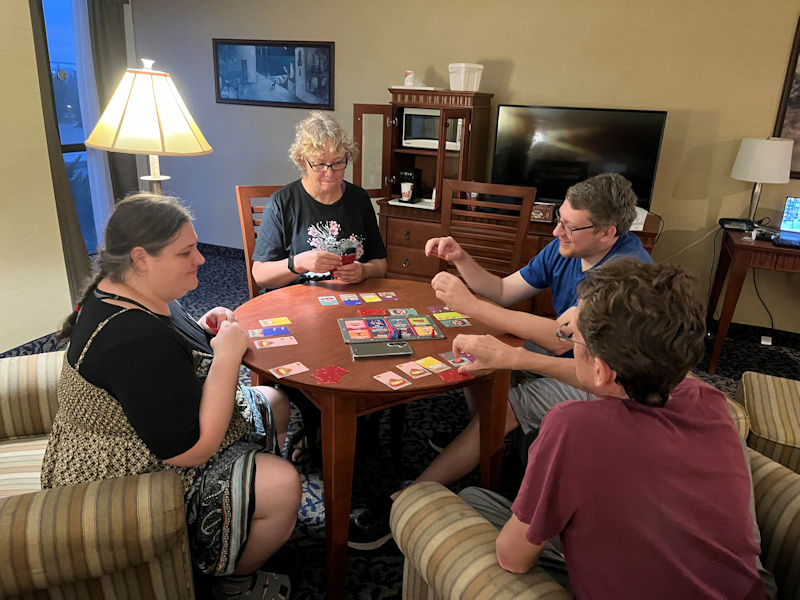
It's board game time!
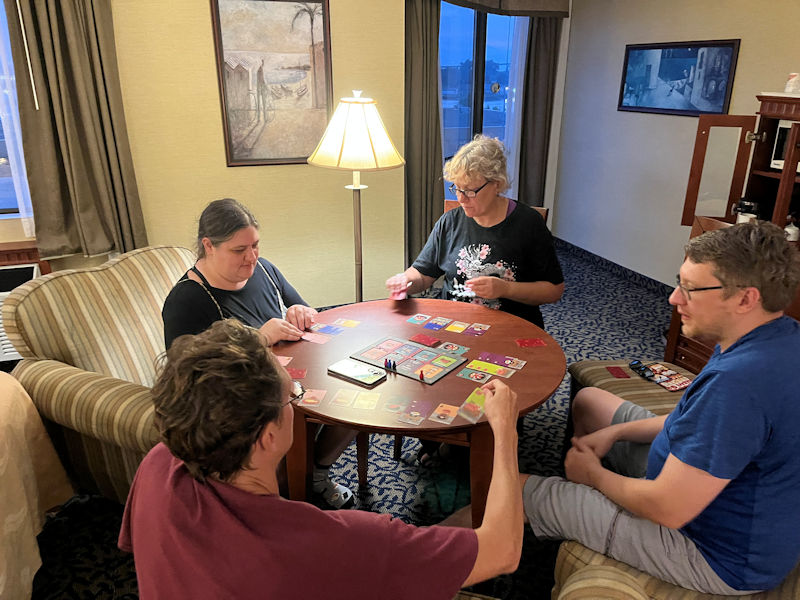
Possibly less complicated than last night's tournament

Trying to guess who won in the end. Only one participant's smiling.
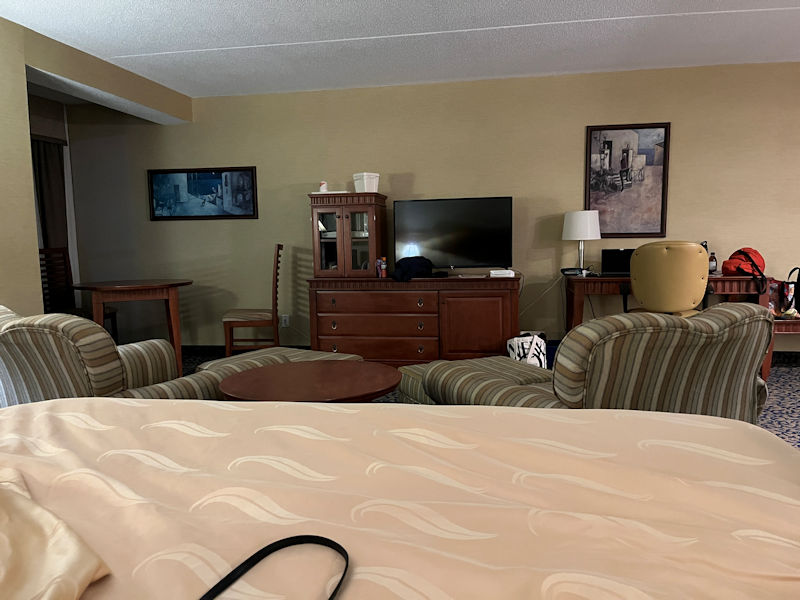
All agreed, we'll meet for breakfast tomorrow (waffles, anyone? scrambled egg wraps?), and then we'll meet again another day in the future . . . when no members need to be reluctant to try crossing into the USA.
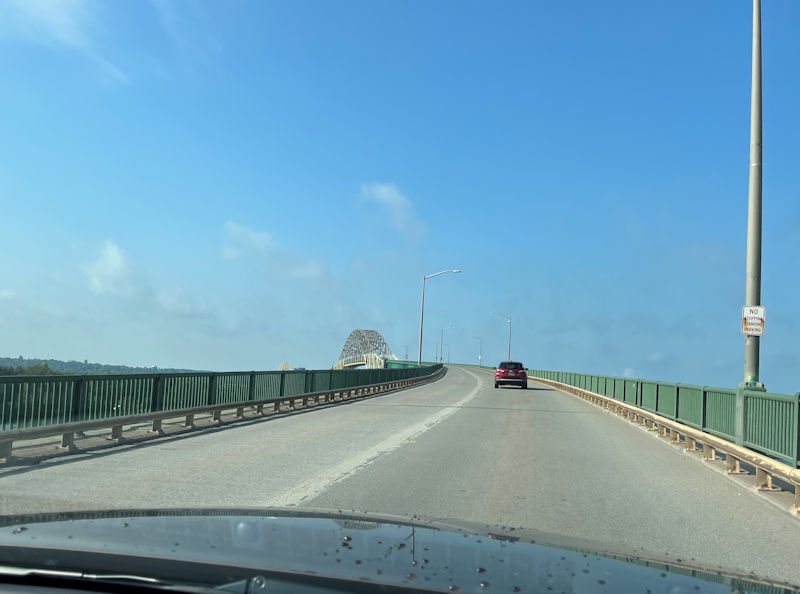
Alison and Ryan are driving back to the Grand Rapids airport, en route to New Mexico; Marlowe, Dima, and William are braving the Trans-Canada Highway back to Ottawa; and we will be cruising back six hours through the Michigan UP.
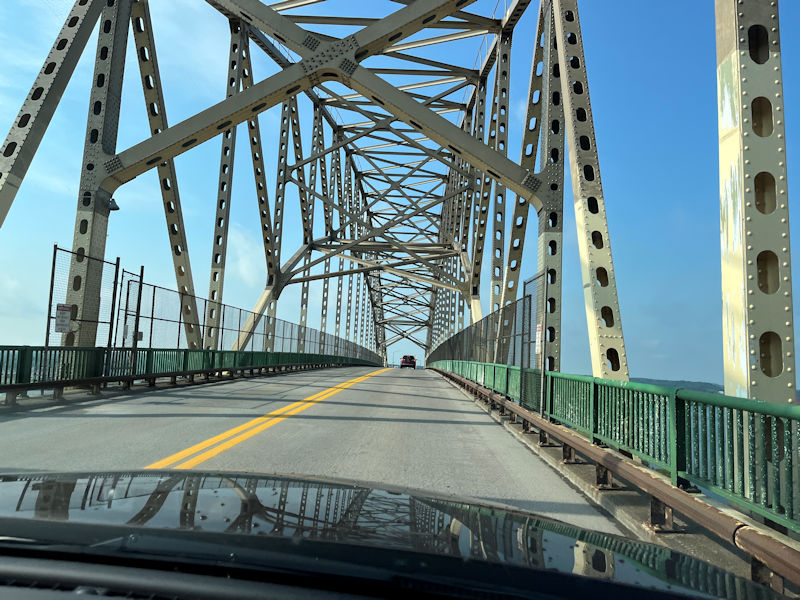
Fine symmetries
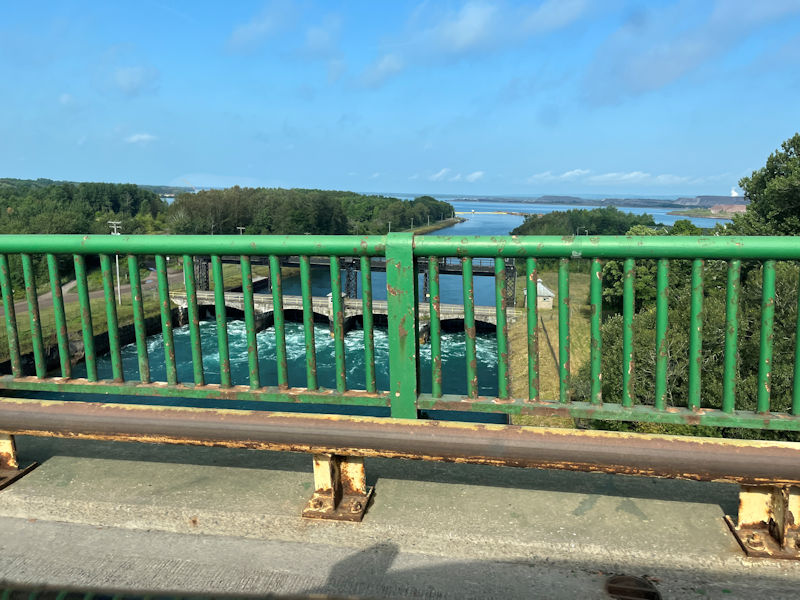
Another branch of St Marys River -- we're in Michigan now, and preparing for . . .
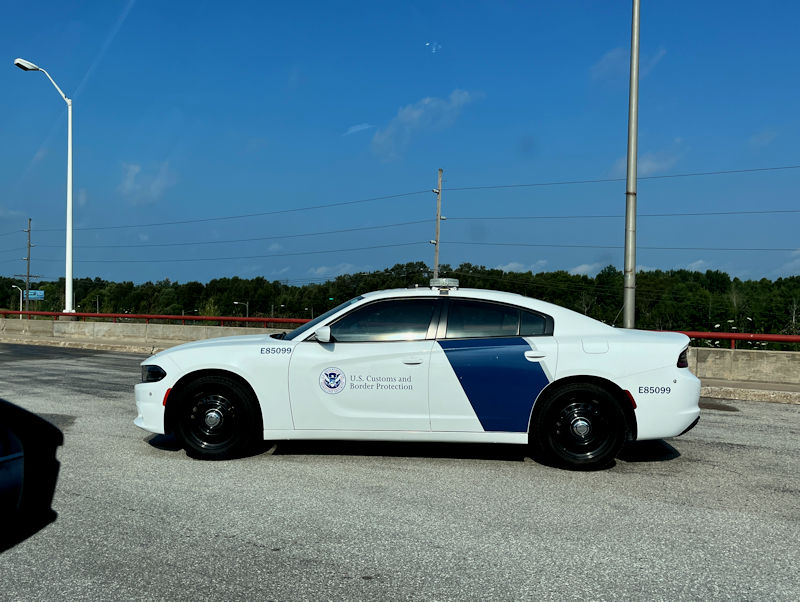
. . . this. Always ominous these days ('don't forget to bring a burner phone'). But in fact, the US staff were friendly and efficient, no worries.
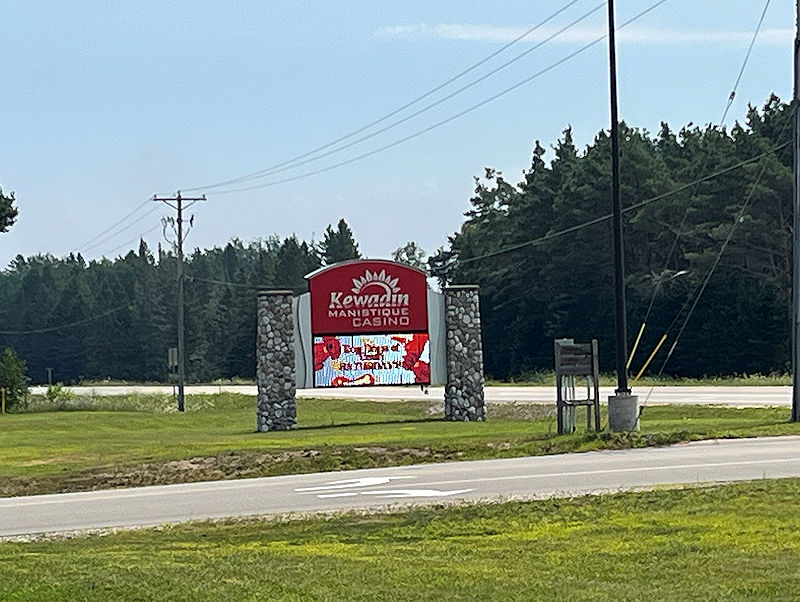
Going home, we've taken I75 south to St Ignace at the Mackinac Bridge, turning right for our old favorite, US2 across the top of Lake Michigan, mostly to go past the Kewadin Manistique Casino --
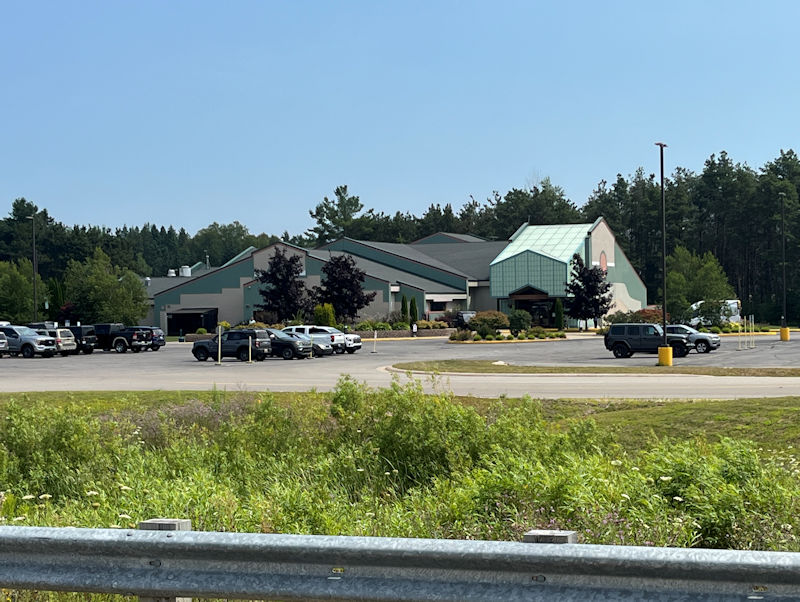
-- here, very nice (probably), in order to make sure that we don't miss . . .
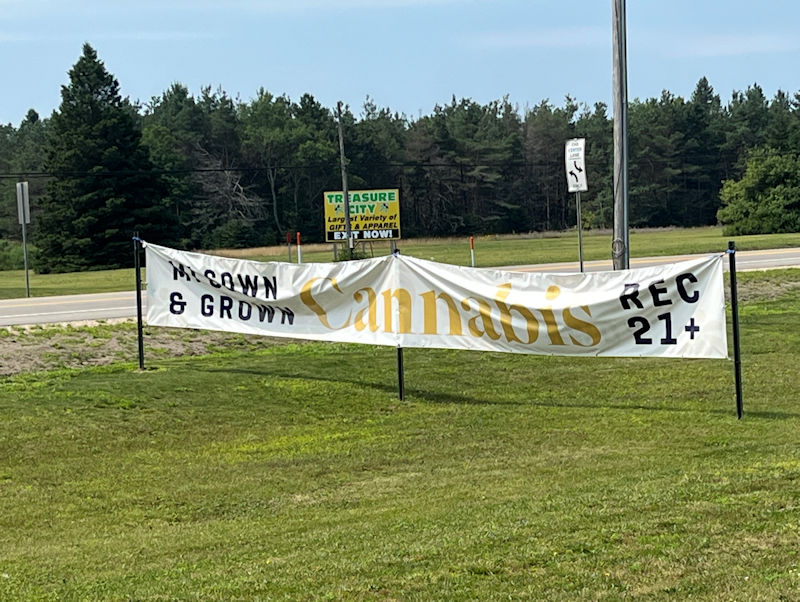
. . . the gummies store on the next lot.
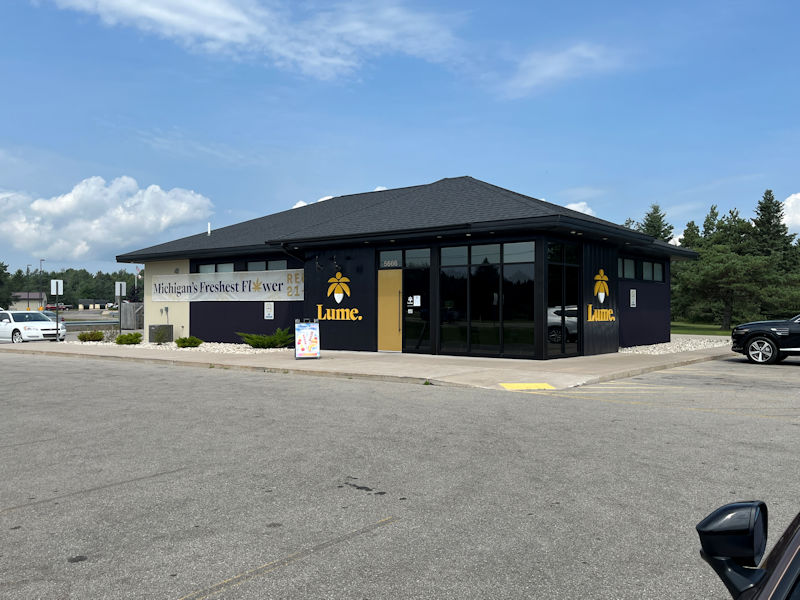
Michigan's a free state, unlike Wisconsin, where the Tavern League has long prevented any progressive steps forward by the legislature. (Of course, it's a pretty crap legislature anyway.)
('Founded in 1935, the Tavern League of Wisconsin is the largest trade association in the United States to exclusively represent the interests of licensed beverage retailers.') Thanks for that.
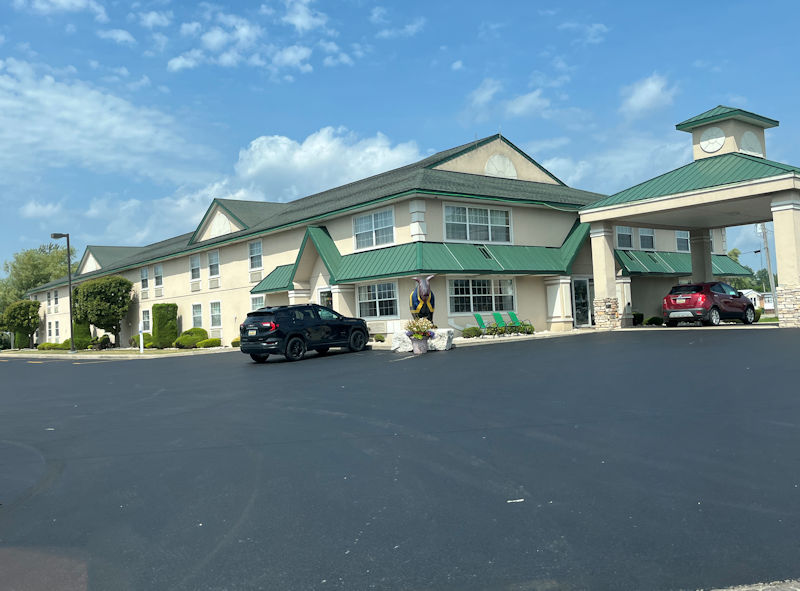
Hurtling past our favorite accommodations in Manistique when we're passing this way -- but today we're plunging on across the map past Escanaba another 3½ hours. (That's the 'restfull' moose out front.)

And now we're back in the ancestral home of Culver's, the home of the famous 'double butter cheeseburger' (it's tempting to stop at every one we pass). Then it's back on the road . . .
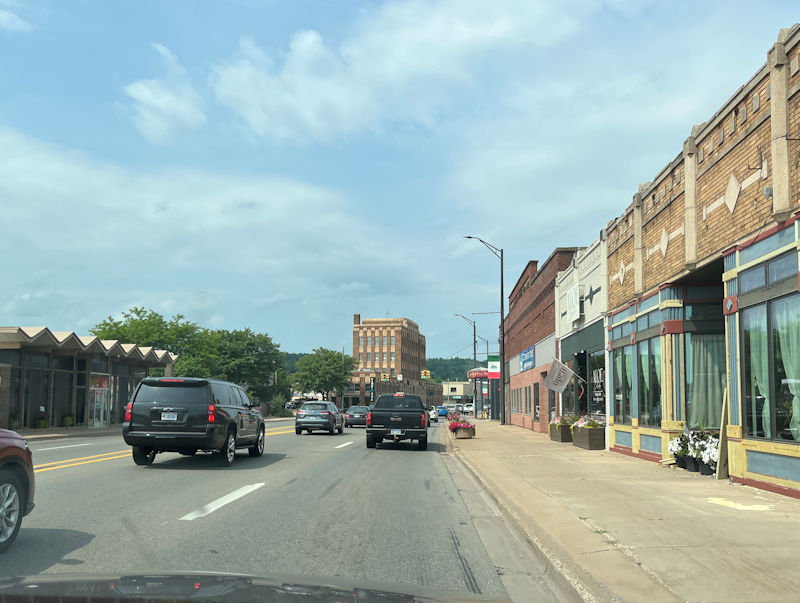
. . . through Iron Mountain, now into Wisconsin towards Eagle River, and . . .
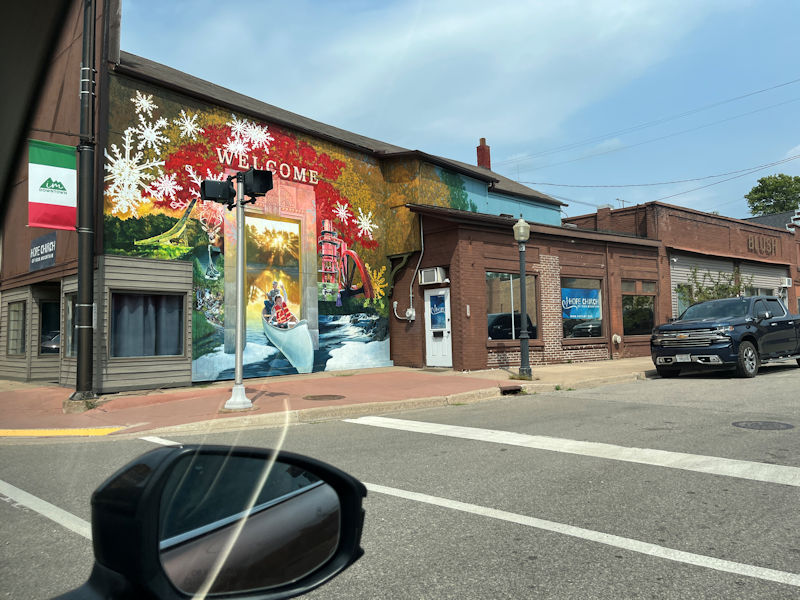
. . . eventually Woodruff, Minocqua, and home.
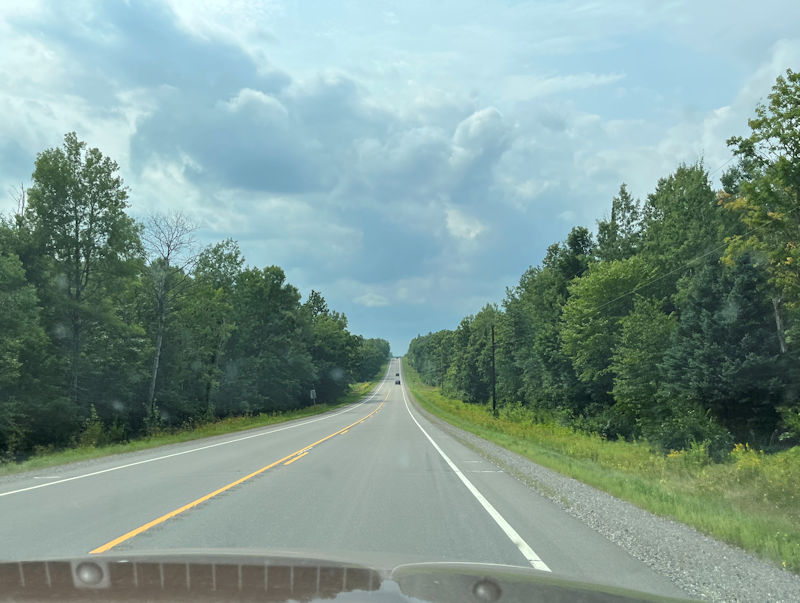
So we'll be powering along over these straight-arrow up and down roads for a while yet.
The roads are in good condition, be it said.
Next up: August lakeside potpourri
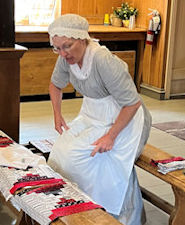 Dwight Peck's personal website
Dwight Peck's personal website
















































































































































































